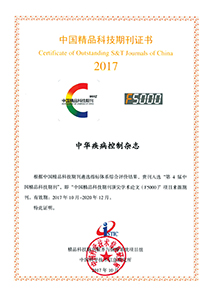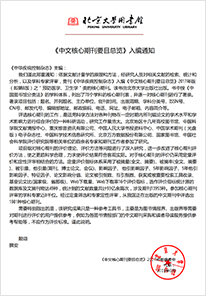2020 Vol. 24, No. 5
Display Method:
2020, 24(5): 497-500.
doi: 10.16462/j.cnki.zhjbkz.2020.05.001
Abstract:
2020, 24(5): 501-505.
doi: 10.16462/j.cnki.zhjbkz.2020.05.002
Abstract:
2020, 24(5): 506-500.
doi: 10.16462/j.cnki.zhjbkz.2020.05.003
Abstract:
2020, 24(5): 516-522.
doi: 10.16462/j.cnki.zhjbkz.2020.05.005
Abstract:
2020, 24(5): 523-528.
doi: 10.16462/j.cnki.zhjbkz.2020.05.006
Abstract:
2020, 24(5): 529-533.
doi: 10.16462/j.cnki.zhjbkz.2020.05.007
Abstract:
2020, 24(5): 534-538.
doi: 10.16462/j.cnki.zhjbkz.2020.05.008
Abstract:
2020, 24(5): 539-542.
doi: 10.16462/j.cnki.zhjbkz.2020.05.009
Abstract:
2020, 24(5): 543-548.
doi: 10.16462/j.cnki.zhjbkz.2020.05.010
Abstract:
2020, 24(5): 549-554.
doi: 10.16462/j.cnki.zhjbkz.2020.05.011
Abstract:
2020, 24(5): 555-561.
doi: 10.16462/j.cnki.zhjbkz.2020.05.012
Abstract:
2020, 24(5): 567-572.
doi: 10.16462/j.cnki.zhjbkz.2020.05.014
Abstract:
2020, 24(5): 573-578.
doi: 10.16462/j.cnki.zhjbkz.2020.05.015
Abstract:
2020, 24(5): 579-585.
doi: 10.16462/j.cnki.zhjbkz.2020.05.016
Abstract:
2020, 24(5): 586-590.
doi: 10.16462/j.cnki.zhjbkz.2020.05.017
Abstract:
2020, 24(5): 591-596.
doi: 10.16462/j.cnki.zhjbkz.2020.05.018
Abstract:
2020, 24(5): 597-601.
doi: 10.16462/j.cnki.zhjbkz.2020.05.019
Abstract:
2020, 24(5): 602-606.
doi: 10.16462/j.cnki.zhjbkz.2020.05.020
Abstract:
2020, 24(5): 607-609.
doi: 10.16462/j.cnki.zhjbkz.2020.05.021
Abstract:
2020, 24(5): 610-613.
doi: 10.16462/j.cnki.zhjbkz.2020.05.022
Abstract:
2020, 24(5): 614-616.
doi: 10.16462/j.cnki.zhjbkz.2020.05.023
Abstract:
2020, 24(5): 617-620.
doi: 10.16462/j.cnki.zhjbkz.2020.05.024
Abstract:


 Email alert
Email alert RSS
RSS Abstract
Abstract HTML
HTML PDF
PDF





